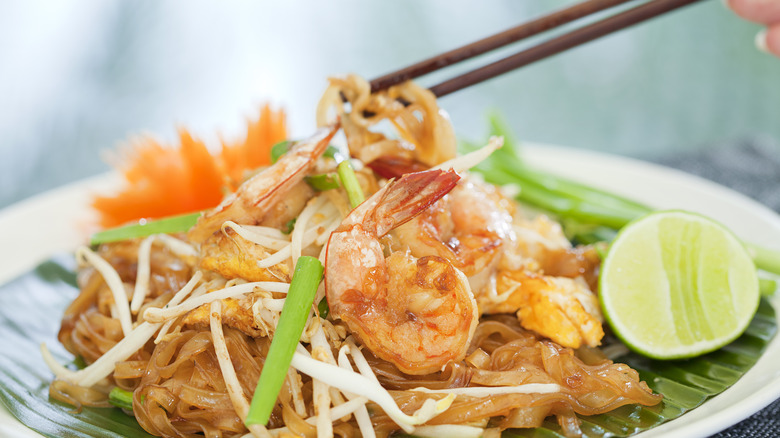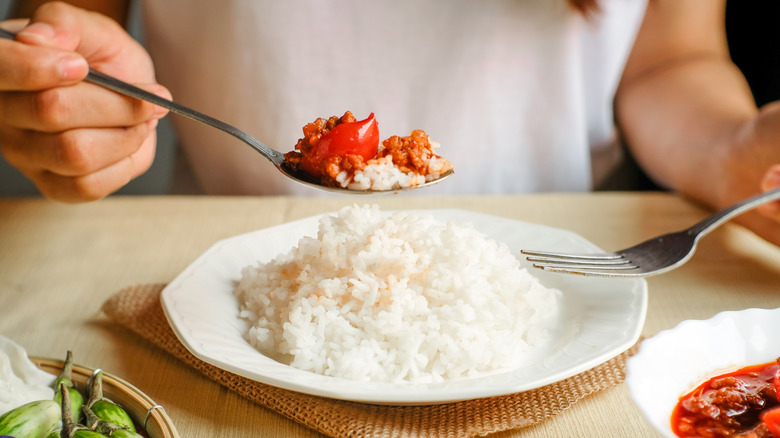Why You Shouldn't Ask For Chopsticks At A Thai Restaurant
Some food and utensil pairings are so ubiquitous that they have become automatic associations, which are hard to break once they've entered deep into the cultural consciousness. For example, Ethiopian food is famously eaten not with utensils but rather with the delicious injera bread, diehard grapefruit fans use special spoons to easily scoop out the pink and tart juicy flesh, and when it comes to eating "Asian" food — a catch-all term that could mean Japanese, Korean, Chinese, Vietnamese, Laotian, Taiwanese, or Thai food (to just name a few) — many people automatically think of chopsticks.
Eating with chopsticks can be complicated for those who haven't tried the practical utensil before, and the etiquette rules of eating with chopsticks are even more complicated, depending on which country you're dining in. In Taiwan, for example, putting your chopsticks on the table is considered rude, and in Japan, it is frowned upon to rub two wooden chopsticks together. In Thailand, however, there's one simple rule to follow when it comes to chopsticks: Don't ask for them.
Thais use forks and spoons
Chopsticks have been around for a long time in our culinary history: More than four millennia ago, they first appeared in China and the convenient eating utensil quickly made the rounds to the neighboring countries of Korea, Japan, and Vietnam. The Chinese influence tried to make chopsticks the norm in Thailand as well, and efforts were made by way of missionaries. However, the chopstick movement was quickly quashed by the monarchy in charge at the time.
King Rama IV or II was hosting the British consul for dinner and was so taken by the Western fork and spoon combination that the ruler made these two pieces of cutlery the norm in Thailand (before this royal edict, eating with the hands, perb-kaao, was the norm). However, knives were shunned from the table due to their threatening potential to be wielded as a weapon. Thais adopted the fork and spoon alone, and used them in their own unique way — the fork is used as a shovel with the left hand to move food onto the spoon in the right hand, which is then used to deliver the goods to the mouth. One exception to the fatwa on chopsticks is that they are used in some Chinese-style dishes, like noodle soup. But the next time you're about to order a pad Thai in a Thai restaurant, ask for a fork and spoon if you want to do it as the locals do.

